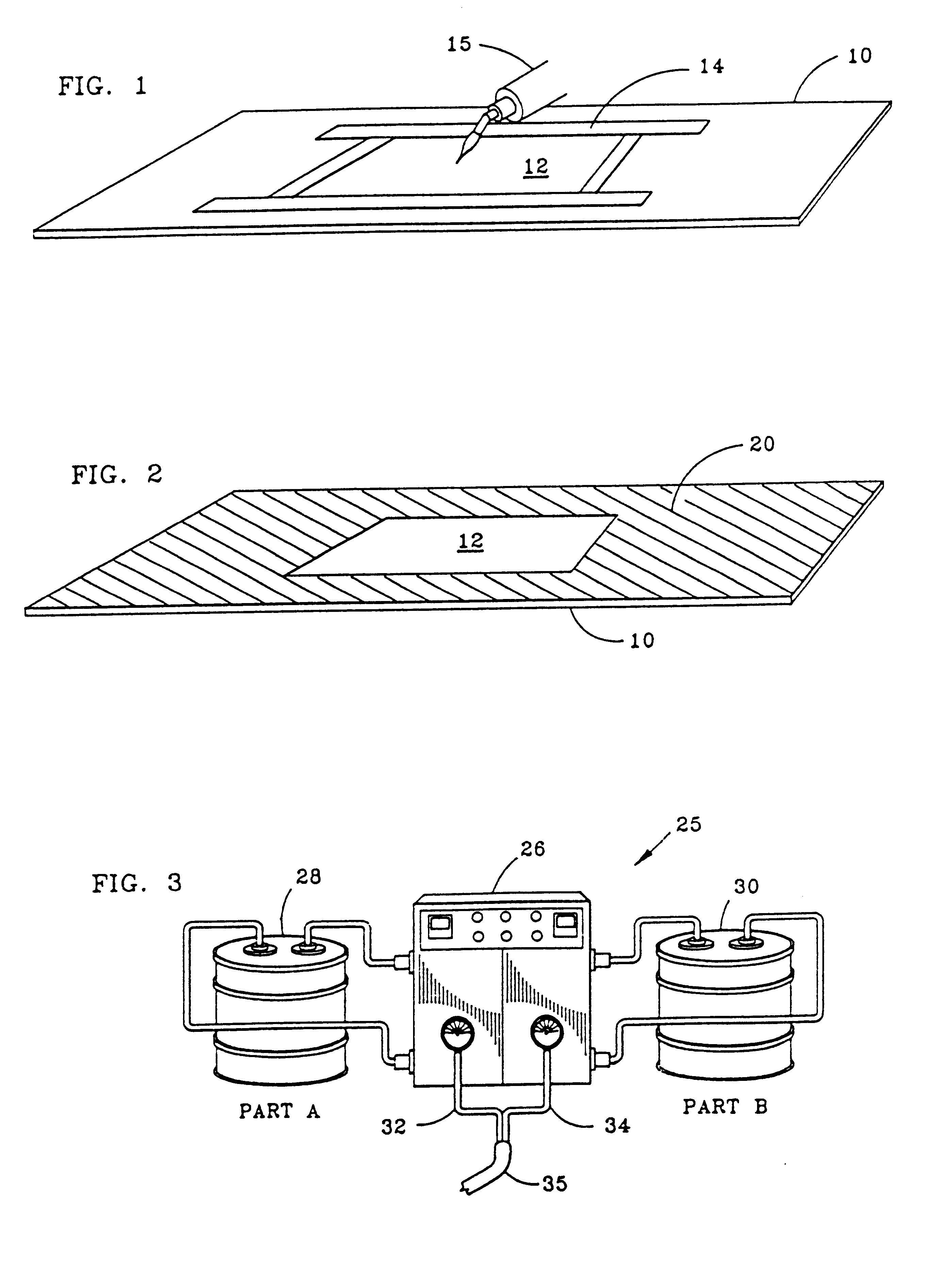Thermoplastic products having antislip surfaces
a technology of thermoplastic products and anti-slip surfaces, which is applied in the field of thermoplastic materials, can solve the problems of easy application of anti-slip surfaces, and achieve the effects of effective anti-slip surface properties, durability and wearability of anti-slip materials, and good adhesion
- Summary
- Abstract
- Description
- Claims
- Application Information
AI Technical Summary
Benefits of technology
Problems solved by technology
Method used
Image
Examples
Embodiment Construction
Both the first or original method and the second or alternative method for forming antislip surfaces on thermoformed products according to the invention are illustrated in the example of FIGS. 1 to 6A. FIGS. 6B and 7 particularly relate to the thermoforming step of the original method of the invention. In this example, using either process, an HDPE sheet 10 is to be thermoformed into a pickup truck bed liner 60, of which the cargo carrying surface 12, 62 is to be prepared according to the invention with an antislip surface. Other thermoplastic polymer plastic sheets can alternatively be used. The HDPE sheet is typically in the size range of approximately 5.times.10' (1.5 m.times.3.0 m) with a thickness typically in the range of 180 mils-250 mils (4.5 mm-6.2 mm) for forming the bed liner. Other form-stable finished products may be made from thermoplastic sheets or layers having a thickness in a range from 150 mils-400 mils. In a prior operation, the sheet 10 was formed by sheet extru...
PUM
| Property | Measurement | Unit |
|---|---|---|
| temperature | aaaaa | aaaaa |
| temperature | aaaaa | aaaaa |
| pressure | aaaaa | aaaaa |
Abstract
Description
Claims
Application Information
 Login to View More
Login to View More - R&D
- Intellectual Property
- Life Sciences
- Materials
- Tech Scout
- Unparalleled Data Quality
- Higher Quality Content
- 60% Fewer Hallucinations
Browse by: Latest US Patents, China's latest patents, Technical Efficacy Thesaurus, Application Domain, Technology Topic, Popular Technical Reports.
© 2025 PatSnap. All rights reserved.Legal|Privacy policy|Modern Slavery Act Transparency Statement|Sitemap|About US| Contact US: help@patsnap.com



